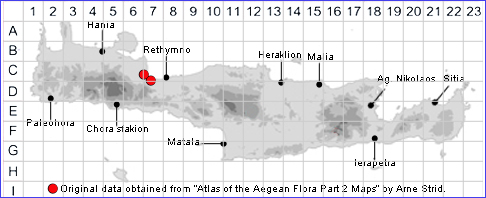TRIPOLIUM PANNONICUM
Family and Genus:- See- COMPOSITAE
Common Name:- Sea aster
Homotypic Synonyms:- Aster pannonicus, Aster tripolium subsp. pannonicus,
Galatella tripolium subsp. pannonica, Tripolium vulgare var. pannonicum.
Meaning:- Tripolium (Gr) A name used by the Greek philosopher Theophrastus for
a plant with three times the strength of teucrium polium.
Pannonicum (L) From SW. Hungary (Pannonia)
General description:- Annual or short-lived perennial.
Stems:-
1) (5-)20-60(-115) cm. erect or ascending, branched from the base upwards, often
reddish, glabrous or nearly so.
Leaves:-
1) Lanceolate to linear, moderately to strongly succulent and then more or less
terete, the lower narrowed into a long petiole and semi-amplexicaul.
2) Sessile, with a wide base.
Flowers:-
1) Capitula, in corymbs or flat-topped panicles with bright blue or purple rays
surrounding a yellow disc, 8-20mm.
2) Involucral bracts, in 2-3 rows, oblong, subobtuse to rounded, with or without
cilia.
3) Ligules, 10-30, bright blue or lilac, often absent.
Fruit:-
1) Achenes, oblong, usually compressed, more or less hairy and often glandular.
2) Pappus-hairs scabrid, whitish to yellowish or reddish, often unequal, in 1-2
indistinct rows.
Key features:-
1) Leaves, eglandular, glabrous and ± succulent, the lower long-petiolate.
2) Inner involucral bracts, subobtuse to rounded.
3) Stem, glabrous.
4) Ligules, much longer than the pappus.
Habitat:- Coastal, habitats, sometimes in saline places inland. 0-5 m.
Distribution:- Widespread throughout the Mediterranean coastal areas. Rare on
Crete known only from a few coastal locations in the northwest.
Flowering time:- (May-)July-Nov.
Photos by:- Fotis Samaritakis
SPECIES DESCRIPTION
